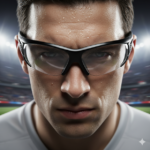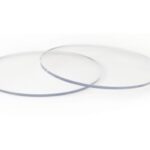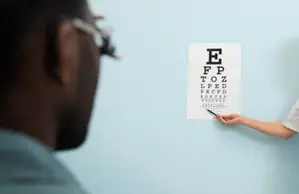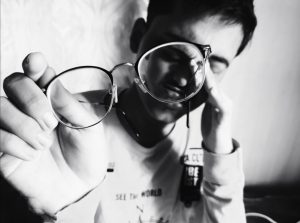Athletes live in a world where every millisecond matters, where clear vision can mean the difference between victory and defeat. For those struggling with glasses that fog up during intense play or contacts that shift at crucial moments, LASIK surgery often seems like the perfect solution. But is LASIK truly safe for athletes? The answer isn’t a simple yes or no, it depends on several crucial factors that every athlete should carefully consider.
The Athletic Vision Challenge
Before diving into LASIK safety, it's important to understand why athletes seek vision correction in the first place. Traditional corrective eyewear presents unique challenges for athletic performance. Glasses can fog up in extreme weather conditions, slip during physical activity, or even break during contact sports, potentially causing eye injuries. Meanwhile, contact lenses can dry out, shift position, collect sweat and debris, or increase infection risk, particularly in water sports.
For athletes, these aren’t just minor inconveniences, they can be performance-limiting factors that affect reaction time, depth perception, and peripheral vision. This is why many professional athletes have turned to laser vision correction, with notable successes including LeBron James, Tiger Woods, Amy Van Dyken, and Brendan Hansen.
LASIK Safety: The Good News
LASIK is considered one of the most thoroughly studied elective procedures, with complication rates below one percent. The surgery has been performed on millions of patients worldwide, with a 96% patient satisfaction rate according to the American Refractive Surgery Council. For many athletes, LASIK provides significant advantages:
Enhanced Performance Benefits:
Improved visual acuity and depth perception
Better peripheral vision compared to glasses
Faster reaction times
Elimination of visual limitations from corrective lenses
Increased confidence during competition
Practical Advantages:
Freedom from fogging glasses or shifting contacts
Reduced risk of eye infections compared to contact lens wear
No risk of broken glasses causing facial injuries
Better performance in extreme weather conditions
The Athletic Considerations: Contact vs. Non-Contact Sports
The safety of LASIK for athletes largely depends on the type of sport they participate in. The procedure creates a corneal flap that, while it heals securely, can potentially be displaced by direct trauma to the eye. Low-Contact Sports: Generally Safe
For athletes in running, cycling, swimming, golf, tennis, and similar low-contact activities, LASIK is typically very safe. These sports have minimal risk of direct eye impact, making flap dislocation extremely unlikely. Many athletes in these categories can return to training within a week.
High-Contact Sports: Proceed with Caution
Athletes in boxing, football, wrestling, martial arts, basketball, and hockey face higher risks. While serious complications remain rare, the potential for eye trauma is significantly greater. Case studies have documented flap dislocations occurring months or even years after LASIK surgery due to sports related eye injuries.
Alternative Options for High-Risk Athletes
Recognizing the limitations of LASIK for contact sport athletes, eye surgeons often recommend
alternative procedures:
PRK (Photorefractive Keratectomy)
PRK is frequently recommended over LASIK for athletes in contact sports because it doesn’t create a corneal flap. Instead, the outer layer of the cornea is completely removed and allowed to regenerate naturally. This eliminates the risk of flap-related complications entirely.
Key advantages of PRK for athletes:
No flap creation means no risk of dislocation
Better suited for high-impact sports
Long-term stability without flap concerns
Preferred choice for military personnel facing similar risks
The main drawback is longer recovery time—several weeks compared to LASIK's few days. However, many contact sport athletes find this trade-off worthwhile for the enhanced long-term safety.
SMILE (Small Incision Lenticule Extraction)
SMILE surgery is increasingly recommended for athletes due to its minimally invasive approach. The procedure uses only a 2-4mm incision and doesn’t create a flap, making it more suitable for contact sports than LASIK.
Benefits for athletes include:
Faster recovery time than PRK
Reduced risk of dry eyes
Enhanced corneal stability
No flap-related complications
Sport-Specific Guidelines
Swimming: Two-week break required to prevent infection from water exposure
Contact Sports: Wait 7 days minimum for soccer, 12 weeks for boxing/martial arts
Basketball: 1-2 weeks before returning to play, starting with light exercise
The key is scheduling surgery during off-season periods to allow adequate healing time.
Making the Right Decision
For athletes considering LASIK, several factors should guide the decision: Ideal Candidates
Athletes in low-contact sports
Those who can schedule surgery during off-season
Individuals with stable prescriptions and healthy eyes
Athletes willing to wear protective eyewear if recommended
Consider Alternatives If
Participating in high-contact/collision sports
Unable to take adequate time off for recovery
Already prone to dry eyes or healing complications
Competing at professional levels where any risk is unacceptable
Essential Precautions
Regardless of the chosen procedure:
Work with experienced refractive surgeons familiar with athletic needs
Follow all post-operative instructions meticulously
Consider protective eyewear for high-risk activities
Plan surgery timing carefully around competition schedules
Be honest about sport type and injury risks during consultation
The Bottom Line
LASIK can be safe for athletes, but sport type and individual circumstances matter significantly. For recreational and low-contact sport athletes, LASIK offers excellent safety profiles and performance benefits. However, athletes in contact sports should seriously consider PRK or SMILE as safer long- term alternatives.
The key to success lies in honest communication with your surgeon about your athletic activities, careful procedure selection based on sport demands, and adequate recovery time. While the allure of perfect vision is strong, the decision should always prioritize long-term eye health and safety over short-term convenience.
Modern vision correction technology offers multiple pathways to visual freedom for athletes. By understanding the risks, benefits, and alternatives, active individuals can make informed decisions that enhance both their performance and their safety. Remember that the investment in proper consultation and procedure selection today can determine your visual health for decades of athletic competition to come.










